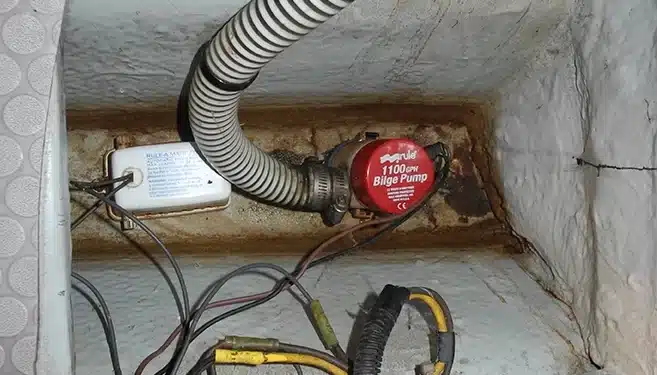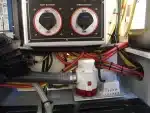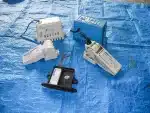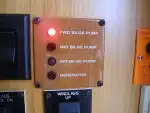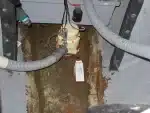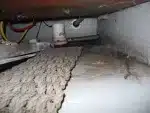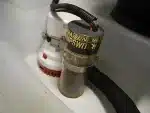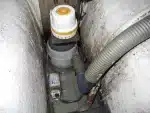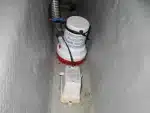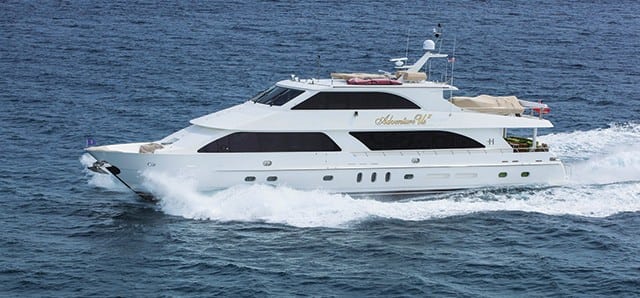Bilge Pump Maintenance
Keep the bilge area clean and test the pump to make sure it is working.
Dewatering device—that’s what the U.S. Coast Guard calls it. You may know it as a bilge pump. If you have a dinghy or a small rowboat, then you may have a plastic scoop to dewater your boat. Larger boats often have a battery-operated electrical bilge pump to remove water from the vessel. This is a key part of your boat’s safety equipment and should be understood for proper bilge pump maintenance. It’s all simple to do so let’s get started.
Where are the Bilge Pumps and How Do They Work?
A boat owner should know how many bilge pumps are aboard and where they are. A water level sensor will turn the pump on automatically to remove water from the vessel. On a 35-foot boat, there may be a dedicated bilge pump system in the lazarette, engine room, and forward bilge.
The bilge pump should be directly wired to the vessel’s battery with an inline fuse. This will bypass the boat’s main battery on/off switch. When the boat batteries are turned off, the bilge pumps will still have power. Next, determine if the sensor has a mechanical float switch or an electronic design with no moving parts.
The Float Switch Water Level Sensor
Two key components of the bilge pump system are the water level sensor and the pump itself. If the pump sensor is a simple float switch, then it will rise with an increase in bilge water. As the float switch rises, it turns on the bilge pump motor. As the bilge water level drops, the float will lower and turn off the bilge pump motor. It’s a very simple operation if working as designed.
Mom always said to keep your room clean, and the engine room is no exception. Be sure that the bilge area is free of old dirt and sludge. Grime in a wet bilge will affect the mobility of a float switch.
If the float has restricted movement, you may have two concerns. First, the float may not rise to turn on the bilge pump. Second, if it does turn on and the water is deep enough, the float switch could get stuck in the on position. In this case, the bilge pump will continue to run…and run…and run until you notice and intervene.
If the bilge pump motor runs dry for too long, it will overheat and seize. A float switch with a built-in safety cover will prevent obstructions from interfering with the float device.
Electronic Sensors
Electronic water level sensors do not have any moving parts. They function when water covers BOTH points of the sensor unit and activates the bilge pump. Without moving parts, there is less concern for bilge debris blocking the float switch movement.
Submersible and Remote-mounted Pumps
Bilge pumps are made in two basic designs, submersible models and remote-mounted, self-priming diaphragm designs. The submersible models are the most common. They are mounted down in the bilge and the electric motor is cooled by the water around it. When the water is lowered, the pump is turned off.
Remote-mounted bilge pumps are usually mounted somewhere higher in the bilge and are easily reached for maintenance. Since these are above the bilge water level, they must be self-priming to pull the bilge water up and then overboard.
All bilge pumps should have a strainer to protect the pump. The submersible models have the strainer built into the mounting bracket. Remote bilge pumps should have an inline strainer to protect the pump. Check all strainers for debris, funk, hair, and other bilge dirt.
Where Did the Water Come From?
Where does the water come from that risks sinking the boat? There are a lot of possibilities, such as rainwater leaking in through deck hatches, rudder or propeller shaft seals including the dripless designs, air conditioner-cooling water pumps, and bad hoses or strainers in the engine raw-water intake cooling systems.
Methods of Checking Bilge Pump Operation
Many people test the bilge pump by turning the ON switch at the helm. This is a false indicator, only proving the motor runs. Set that switch to AUTO for automatic operation, not OFF. You can trick the sensor by lifting a float switch or using the test mode on an electric switch. These tests only prove the switch will turn ON the motor.
The only way to prove the bilge pump system is in working order is to flood the bilge with freshwater. Then watch the level sensor turn on the motor and pump the water overboard. Use bilge soap from the boat store when testing the system to freshen up the bilges. Do not pump oily water overboard. Absorbent pads can help remove oily water.
Also, check your backup manual bilge pump. Larger boats may have a manual pump hidden in a cabinet somewhere. Find the handle and pump to confirm it will move water up and out from the bilge. And if your boat is equipped with a high-water alarm, this is an excellent time to check that feature too.
Best results? Confirming the bilge pumps work properly and a sparkling-clean bilge!

Capt. Chris Caldwell
Captains Chris & Alyse Caldwell are USCG 100-ton Masters and cruising coaches who offer personal boat training online or on board your boat anywhere. The Caldwells help build your cruising confidence with hands-on training, with their AskCaptainChris.com training videos, through two-day seminars filled with tons of tips for the boater who loves learning, and now remote learning. If you have additional questions for Captains Chris or Alyse, please email them at chris@captainchrisyachtservices.com.


